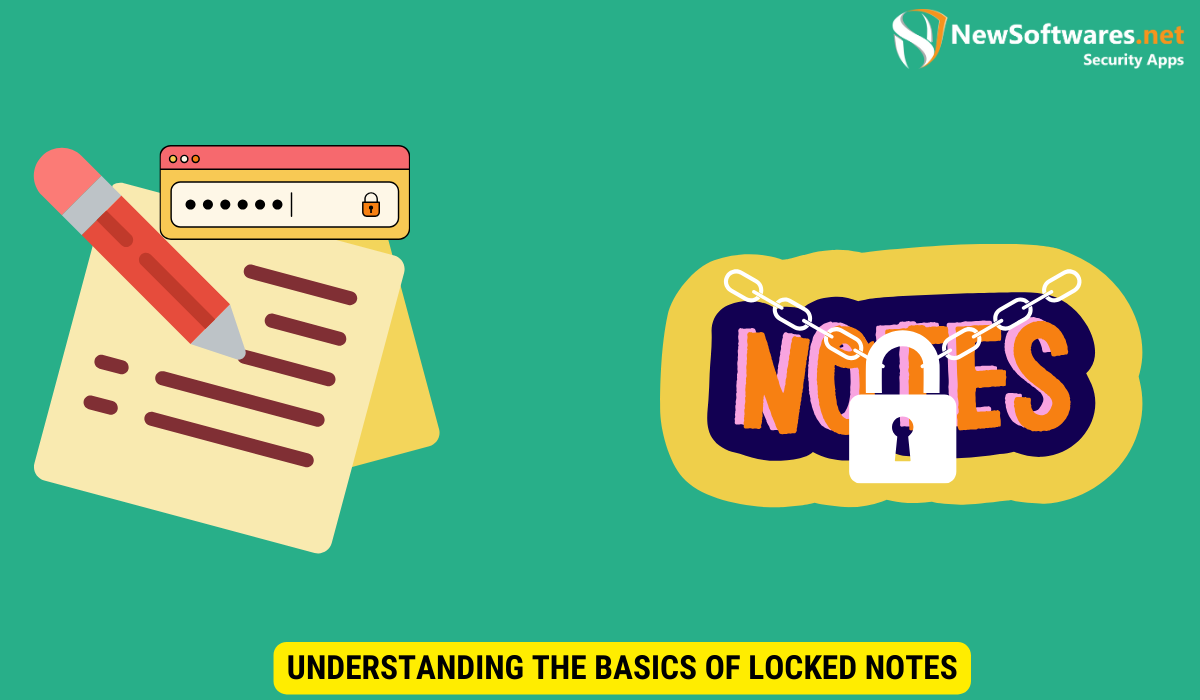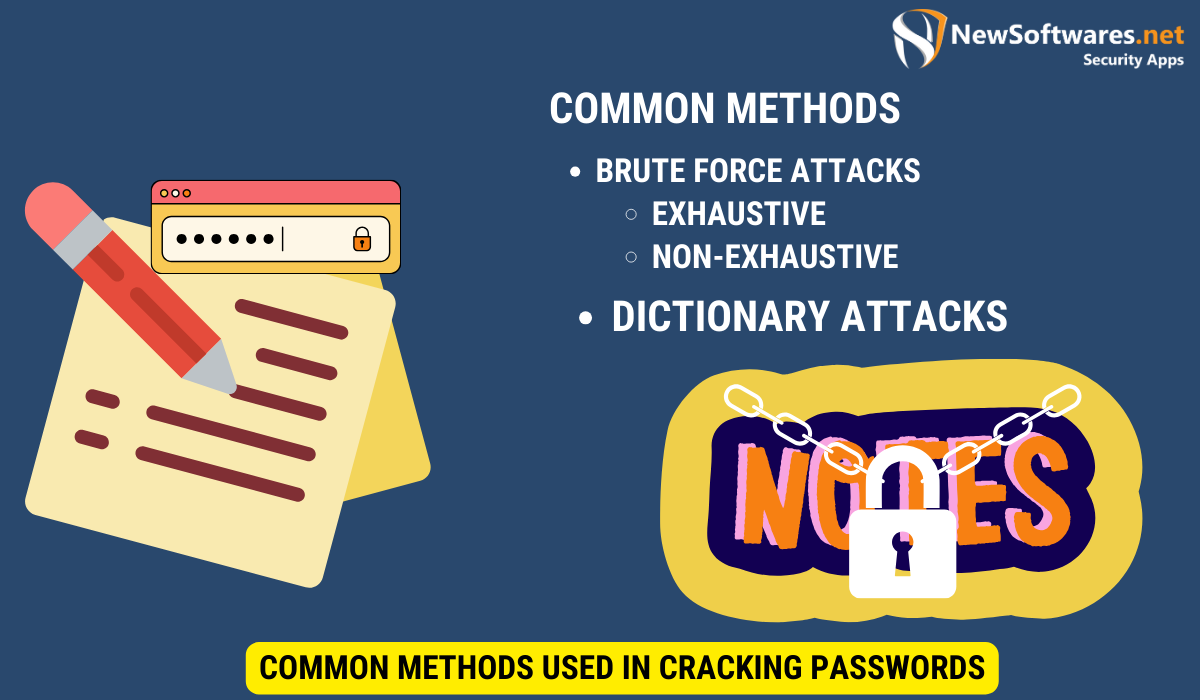If you’re trying to figure out the password for locked notes, the best approach is to try recalling any passwords you commonly use. If that doesn’t work, consider using password recovery methods or contacting the app’s support for assistance.
Locked notes are a popular feature in many note-taking applications, providing an added layer of security to protect your sensitive information. However, what happens when you forget the password to unlock your notes? Don’t panic just yet! In this article, we will dive into the world of locked notes passwords and explore the science behind cracking them, as well as discuss the ethical considerations surrounding this topic. Additionally, we will provide preventive measures to help you secure your notes effectively.
Understanding the Basics of Locked Notes

Locked notes are a security feature that allows you to protect your sensitive information using a password. They are commonly found in note-taking applications such as Apple’s Notes app or Evernote. When you lock a note, it becomes inaccessible without the correct password, ensuring that only authorized individuals can access its contents.
Locked notes provide users with peace of mind, knowing that their confidential information is shielded from prying eyes. This added layer of security is especially crucial in today’s digital age, where cyber threats are prevalent, and data privacy is a top concern for many individuals and organizations.
What are Locked Notes?
Locked notes are encrypted files that store your textual information securely. They provide an additional layer of protection against unauthorized access and can help safeguard sensitive data such as personal information, financial details, or confidential notes.
Encryption algorithms used in locked notes employ complex mathematical computations to scramble the data in such a way that only the intended recipient with the correct decryption key (password) can make sense of it. This level of encryption ensures that even if the file is intercepted, its contents remain unreadable to anyone without the password.
Importance of Passwords in Protecting Notes
Passwords play a crucial role in protecting locked notes. They serve as a key to decrypt the encrypted file and grant access to the note’s contents. Without a valid password, even the most determined individuals will have a hard time cracking the code and accessing your private information.
It is essential to choose a strong, unique password for your locked notes to enhance security further. Avoid using easily guessable passwords such as “123456” or “password” and opt for a combination of letters, numbers, and special characters to create a robust defense against potential intruders.
The Science Behind Password Encryption
The strength of a locked note’s password lies in the encryption algorithm used to secure the data. Let’s delve deeper into the fascinating world of password encryption to unravel the intricate mechanisms that safeguard our sensitive information.
When we set a password to protect our data, we are essentially entrusting it to a complex mathematical process designed to shield it from prying eyes. This process involves the utilization of encryption algorithms that serve as the digital fortresses safeguarding our confidential information.
The Role of Algorithms in Password Protection
Passwords are typically encrypted using sophisticated algorithms such as AES (Advanced Encryption Standard) or RSA (Rivest-Shamir-Adleman). These algorithms play a pivotal role in ensuring the security of our data by transforming it into an unreadable format. This transformation makes it arduous for unauthorized individuals to decipher the information without possessing the correct decryption key, thus maintaining the confidentiality of our personal data.
Furthermore, these encryption algorithms undergo rigorous testing and scrutiny by cybersecurity experts to ensure their resilience against various forms of cyber threats. Their intricate design and robust encryption mechanisms make them formidable barriers that thwart malicious attempts to breach our digital defenses.
Understanding Hash Functions
Hash functions serve as the backbone of password encryption, converting passwords into fixed-length sequences of characters known as “hashes.” These hashes serve as unique digital fingerprints that authenticate our identity without revealing the actual password. A robust hash function ensures that even if an attacker gains access to the hash, deciphering the original password from it becomes a Herculean task, thus bolstering the security of our sensitive information.
The complexity and sophistication of hash functions contribute significantly to the resilience of password encryption, enhancing the overall security posture of our digital assets. By comprehending the intricate interplay between encryption algorithms and hash functions, we can appreciate the meticulous craftsmanship that goes into safeguarding our passwords and preserving the sanctity of our digital identities.
Common Methods Used in Cracking Passwords

While cracking locked note passwords may seem like an insurmountable task, there are common methods used in attempting to break through the barriers. Let’s explore two popular techniques employed by those seeking to crack passwords.
Brute Force Attacks
In a brute force attack, an attacker systematically tries all possible combinations of characters until the correct password is found. While this method can be time-consuming, it can eventually crack a weak password by trying every possible combination.
Brute force attacks can be further categorized into two types: exhaustive and non-exhaustive. In an exhaustive brute force attack, every possible combination of characters is tried, starting from the shortest to the longest passwords. On the other hand, non-exhaustive brute force attacks prioritize trying the most commonly used passwords first, based on statistical data.
Dictionary Attacks
A dictionary attack involves using existing word lists and common phrases to guess the password. Attackers take advantage of users’ tendencies to choose easily guessable passwords, such as common words or predictable patterns.
Moreover, dictionary attacks can be enhanced by incorporating rulesets that modify words with common substitutions, such as replacing ‘o’ with ‘0’ or ‘s’ with ‘$’. These rulesets expand the scope of the attack by considering variations of dictionary words, making it more likely to crack passwords that have been slightly modified for complexity.
The Ethics of Password Cracking
Now that we understand some of the methods used in cracking locked note passwords, let’s delve into the ethical considerations surrounding this controversial topic.
When discussing the ethics of password cracking, it’s important to consider the potential consequences of unauthorized access to someone else’s personal information. While the temptation to uncover hidden data may be strong, it is crucial to remember that breaching someone’s digital privacy without their permission is a violation of trust and can have far-reaching implications.
Legal Implications of Unauthorized Access
It is crucial to note that attempting to crack someone else’s locked note password without their consent is illegal and considered hacking. Engaging in such activities can lead to severe consequences, including fines and imprisonment. Respect for privacy and digital boundaries should always be maintained.
Furthermore, unauthorized access to sensitive information can result in identity theft, financial loss, and emotional distress for the individual whose privacy has been compromised. It is essential to approach password cracking with a strong sense of ethics and responsibility to prevent harm to others.
Ethical Considerations in Password Cracking
While there may be legitimate reasons for attempting to crack locked note passwords, such as recovering lost information, it is essential to proceed with caution and consider the ethical implications. Respect for individuals’ privacy and data security should always be a top priority.
Before engaging in any password cracking activities, individuals should carefully weigh the potential benefits against the risks and ethical considerations involved. Transparency, consent, and respect for others’ digital boundaries are fundamental principles that should guide any decision-making process in this complex and morally challenging field.
Preventive Measures to Secure Your Notes
Protecting your locked notes should be a priority. Let’s explore some preventive measures you can take to secure your notes effectively.
Creating Strong Passwords
Strong passwords are essential to safeguarding your locked notes. Ensure your password incorporates a combination of uppercase and lowercase letters, numbers, and special characters. Avoid using obvious choices such as birthdates or easily guessable sequences.
Utilizing Two-Factor Authentication
Consider enabling two-factor authentication for your note-taking application. This extra layer of security ensures that even if a hacker manages to crack your password, they will still be unable to access your locked notes without a secondary verification method, such as a unique code sent to your mobile device.
Key Takeaways
- Locked notes are encrypted files that provide an additional layer of security.
- Passwords play a crucial role in protecting locked notes from unauthorized access.
- Encryption algorithms and hash functions ensure the security of locked note passwords.
- Brute force attacks and dictionary attacks are common methods used to crack passwords.
- Consideration of legal implications and ethical considerations is vital while engaging in password cracking activities.
FAQs
1. Is cracking locked note passwords legal?
No, attempting to crack someone else’s locked note password without their consent is illegal and considered hacking.
2. Can password cracking algorithms decrypt any password?
No, strong encryption algorithms and hash functions make it nearly impossible to reverse-engineer the original password from the hash.
3. How can I create a strong password?
Create a strong password by incorporating a combination of uppercase and lowercase letters, numbers, and special characters. Avoid using easily guessable choices such as birthdates.
4. What is two-factor authentication?
Two-factor authentication is an additional layer of security that requires users to provide a secondary verification method, such as a unique code sent to their mobile device, in addition to their password.
5. How can I secure my locked notes effectively?
Secure your locked notes by creating strong passwords and enabling two-factor authentication for your note-taking application.
Conclusion
In conclusion, locked notes provide a valuable means of protecting your sensitive information. Understanding the science behind password encryption and the ethical considerations surrounding password cracking can help you make informed decisions to safeguard your notes effectively. By implementing preventive measures such as creating strong passwords and utilizing two-factor authentication, you can add an extra layer of security to your locked notes, protecting them from unauthorized access.
